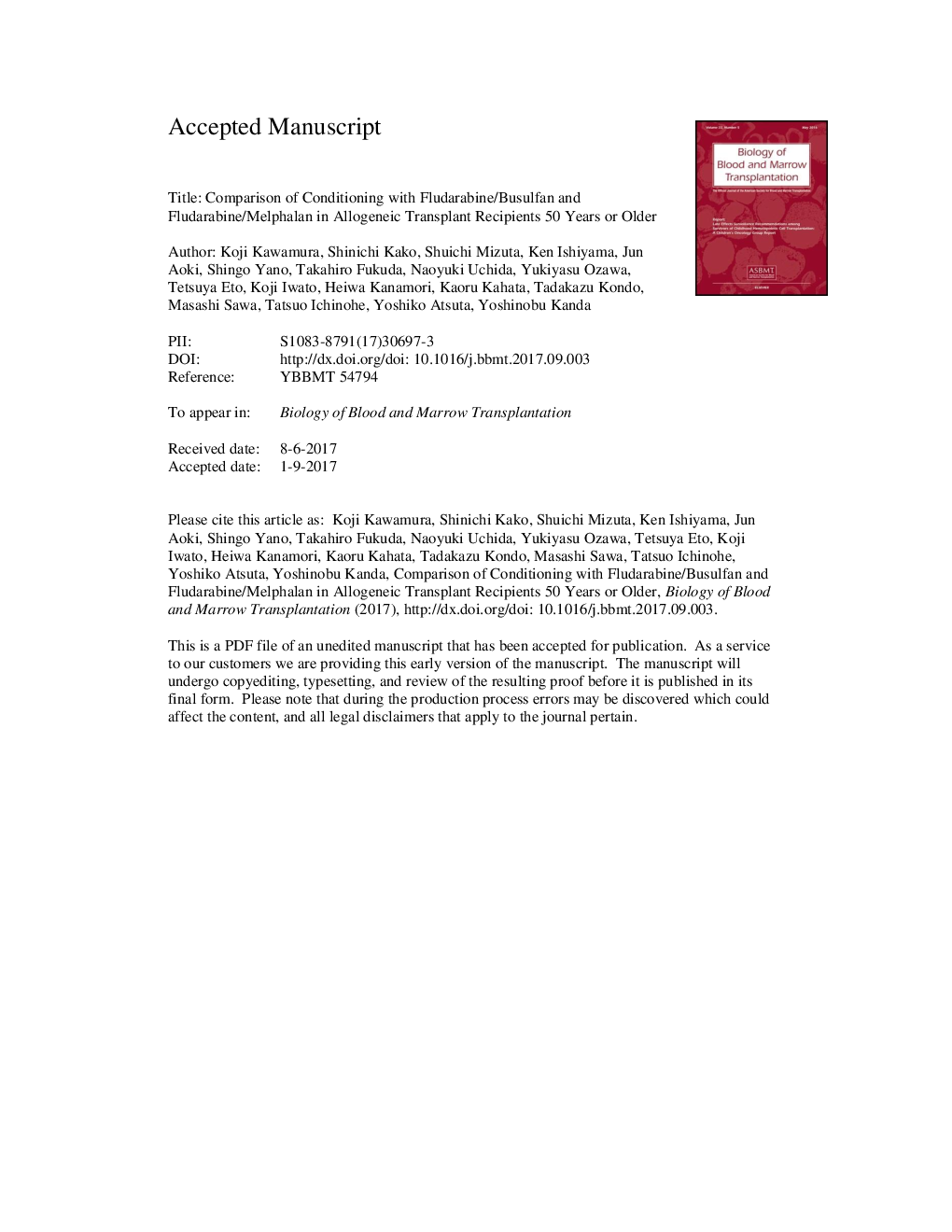| Article ID | Journal | Published Year | Pages | File Type |
|---|---|---|---|---|
| 8430713 | Biology of Blood and Marrow Transplantation | 2017 | 34 Pages |
Abstract
The optimal conditioning regimen for elderly patients undergoing allogeneic hematopoietic stem cell transplantation (allo-HCT) remains unclear. We retrospectively analyzed 1607 patients aged 50 years or older with acute myeloid leukemia (AML), acute lymphoblastic leukemia, or myelodysplastic syndrome (MDS) who underwent allo-HCT using fludarabine/busulfan (FB) or fludarabine/melphalan (FM) between 2007 and 2014. We compared the clinical outcomes among FB2 (busulfan at 6.4âmg/kg iv, nâ=â463), FB4 (busulfan at 12.8âmg/kg iv, nâ=â721), and FM140 (melphalan at 140âmg/m2, nâ=â423). The nonrelapse mortality (NRM) rates in the FB4 and FM140 groups were higher than that in the FB2 group (hazard ratio [HR], 1.63 [Pâ<â.001]; and HR, 1.71 [Pâ<â.001], respectively). Conversely, the relapse rates in the FB4 and FM140 groups were lower than that in the FB2 group (HR, .73 [Pâ=â.011]; and HR, .56 [Pâ<â.001], respectively). There were no significant differences in overall survival (OS) among the FB2, FB4, and FM140 groups. The 3-year OS in patients with high-risk AML and MDS in the FM140 group (37.0% and 60.2%) were superior to those in the FB2 group (24.4% and 45.5%) and the FB4 group (24.6% and 40.6%) (Pâ=â.016 and Pâ=â.023), whereas there were no differences in OS in the other patients among the 3 groups. In conclusion, the lower rates of relapse in the FB4 and FM140 groups were largely offset by a worse NRM. However, FM140 might be associated with better OS in patients with high-risk AML and MDS.
Related Topics
Life Sciences
Biochemistry, Genetics and Molecular Biology
Cancer Research
Authors
Koji Kawamura, Shinichi Kako, Shuichi Mizuta, Ken Ishiyama, Jun Aoki, Shingo Yano, Takahiro Fukuda, Naoyuki Uchida, Yukiyasu Ozawa, Tetsuya Eto, Koji Iwato, Heiwa Kanamori, Kaoru Kahata, Tadakazu Kondo, Masashi Sawa, Tatsuo Ichinohe, Yoshiko Atsuta,
